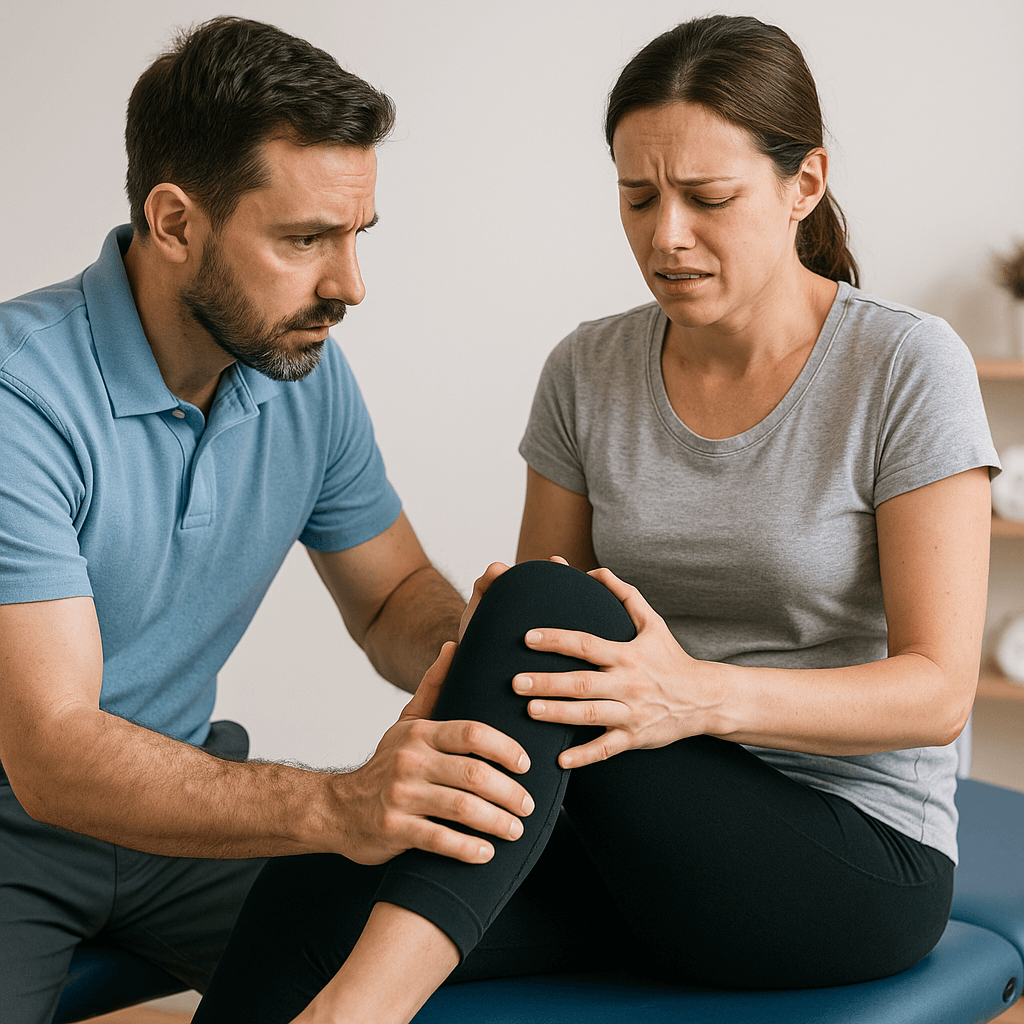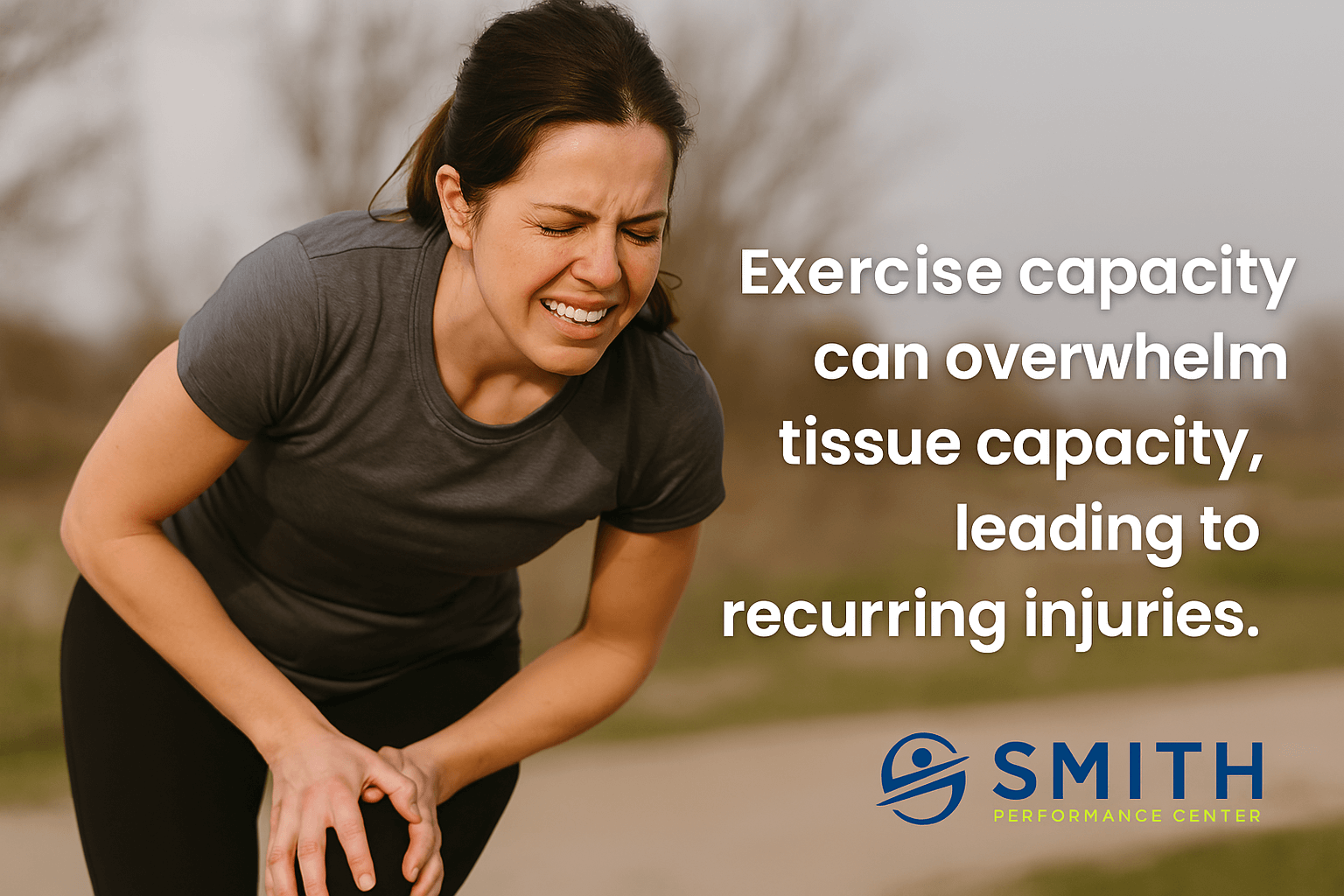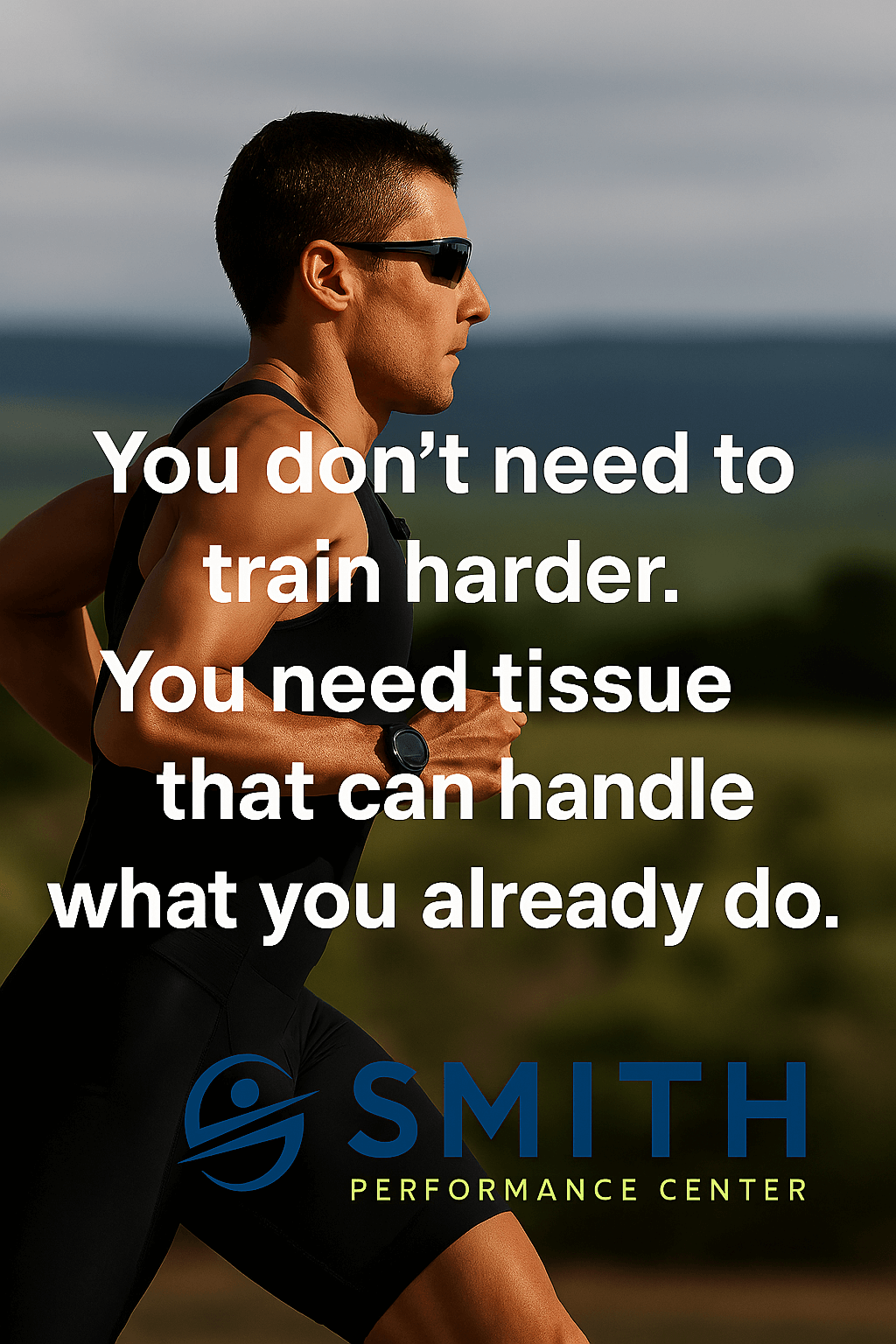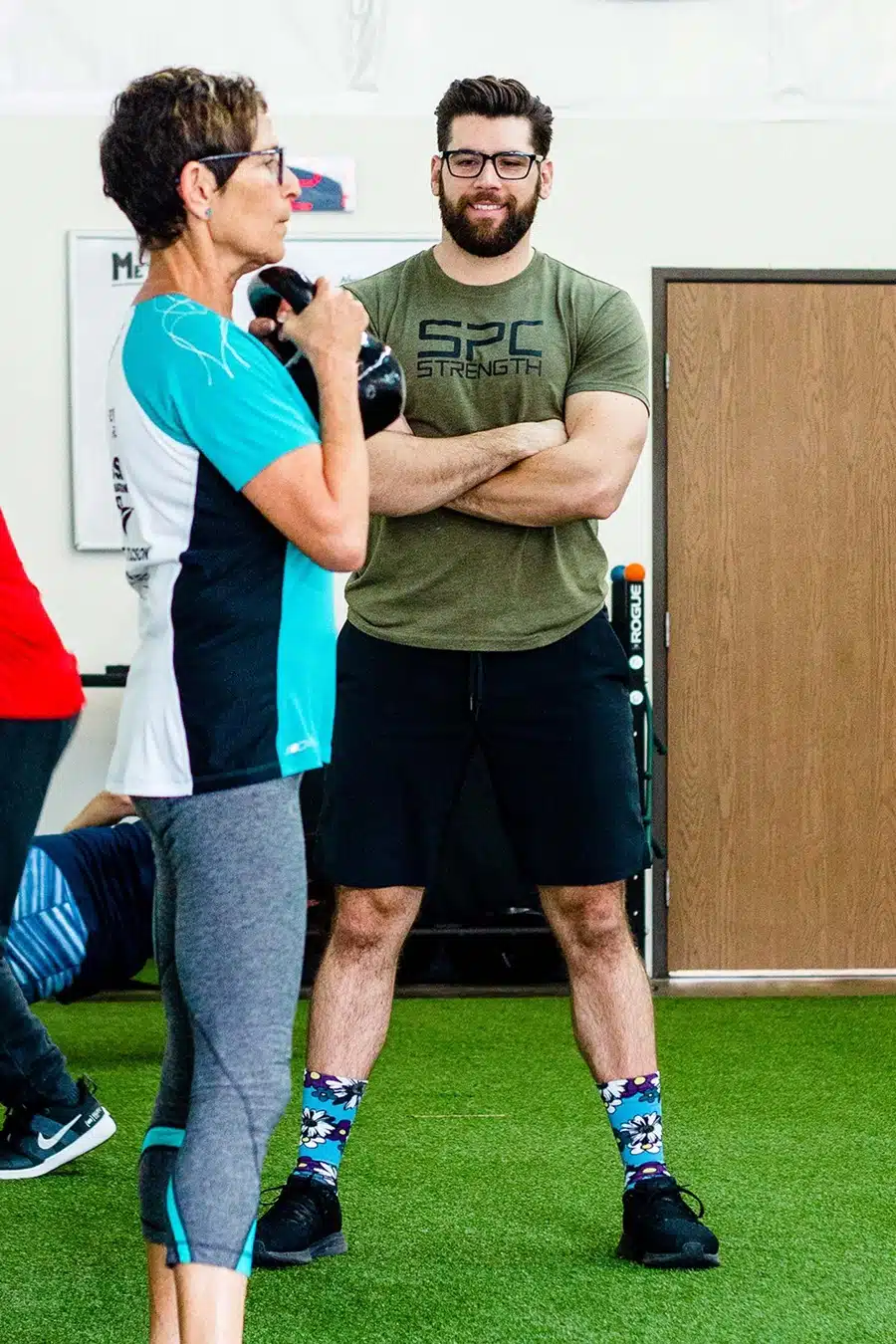Goal setting is one of the most important, yet tricky aspects of training.
Our team believes that goals are secondary to developing habits and systems that you can do day in and day out. We call this an exercise habit and it is a critical aspect of becoming an exerciser. However, goals can help to shape your training, increase motivation, and improve decision-making during the course of workouts.
When you are returning from an injury or dealing with a particularly irritating pain, we believe your goal is very specific.
You need to exercise without your body feeling terrible.
While this sounds obvious, one of the most common training mistakes our coaches see clients make is too much focus on performance while ignoring a recurring injury or pain. If you have pain during your running, biking, lifting, etc., you will not achieve performance goals.
We strongly believe there are 4 goals during activity progression at Smith Performance Center. (Activity Progression is a standard phase of our process at SPC that targets individuals first starting exercising, progressing their activity after an injury, or those who have had difficulty with staying injury-free).
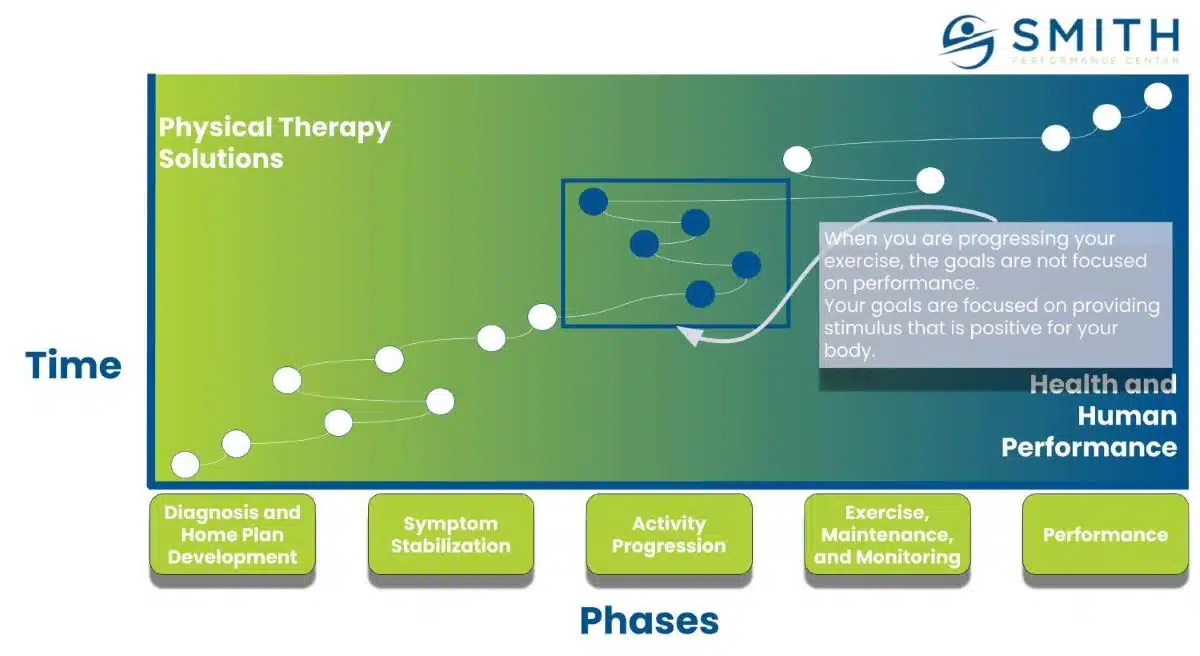
The 4 Primary Goals In Strength Training When Struggling With An Injury or Pain
The 4 primary goals in strength training when you are struggling with pain or coming from an injury are simple:
- No pain during a workout or a workout cycle
- Normal functional movements without dysfunction or pain
- Improve contributing factors
- Increased confidence in your body
Let’s examine each of these goals.
No pain during a workout or a workout cycle
While this seems obvious, this goal is the one most individuals do not consider when starting to exercise.
Here is the truth – it is not obvious. When you start an exercise routine, you have a vision of lifting weights that challenge your muscles. You picture yourself sweating and working hard during a cardio session. You imagine the burn that signifies progress.
You think this because of the principle of overload, which is the basis for all well-developed programs that promise improved function and strength.
But if you are coming back from an injury or keep having pain, this mindset will cause you to fail.
Pain and injury are the number one cause of individuals stopping exercise. If you do not address that your body is not tolerating your workouts, you will quit doing the exercise. It is that simple. The number one goal for exercisers coming back from an injury or struggling with recurring pain is pain free workouts.
We call this the rehab standard.
The rehab standard means that you focus on tissue capacity first and your exercise capacity second. During the rehab standard, we use tools to help progress your tissue capacity. Our team does not give up on anyone. We are fine with multiple setbacks. And we understand the frustration as most of us struggled through this same issue.
But if you set a performance goal like running a faster marathon or lifting more weight but cannot workout without pain, then you will most likely fail.
Focus on the feeling great with exercise first.
Normal functional movements without dysfunction or pain
During our movement assessment, we focus on 6 functional movements that form the basis for all human movement.
If you cannot perform these movements at a high level without compensation then you will struggle to improve your fitness, perform poorly during normal activity, and limit your futute progress When you are coming back from an injury or dealing with recurring pain, these movements must be well tolerated.
Our team used to make the mistake of avoiding painful movements.
We realized that this led to fake improvement.
Avoidance is not a solution if the movement is integral to everything you do in your normal routine. You need to master these movements and feel great. Once you do that, we can expand the modifiable variables (read more about modifiable variables in our article “The 5 Common Modifiable Variables For Programming A Great Workout and Program – Smith Performance Center” and “The 4 Unique Training Variables Used By Our Team To Improve Workout Success“) in your program and target performance goals.
Improve contributing factors
A contributing factor is something that causes you to have your original injury or pain.
The list of contributing factors is large. It can be poor muscle strength. It can be muscle inhibition. You may have a balance problem or be visually dominant so as soon as your eyes are closed, you fall over. Some of these factors will improve as you go through our program, but sometimes they do not. If that happens, then you must target this and make it a goal during your workouts or home plan.
One of the primary contributing factors we address is movement performance, which we already mentioned above.
This can be addressed with support programs and monitoring.
Increased confidence in your body
Pain and injury can rock your confidence.
Sometimes this causes you to actually fear movement. This is called kinesiophobia and it is a real problem. You are prone to this if you have had the problem come on randomly, repeatedly, and severely. There are also body areas that are prone to this like the low back, knee, shoulder, and neck. If you are someone who reached down for a pencil and experienced a massive disc herniation which led you to lie on the ground for hours because you could not stand up, its not surprising that movement is scary as hell.
Here the idea is to have success over and over again while gradually expanding the demands on your body.
Goals matter – process matters more
We want you to be successful.
This means that your focus needs to be on the right goal. The goal when you first start to exercise is to feel great and progress your movement competence and confidence.
Once you have success in this arena, you can focus on performance.

